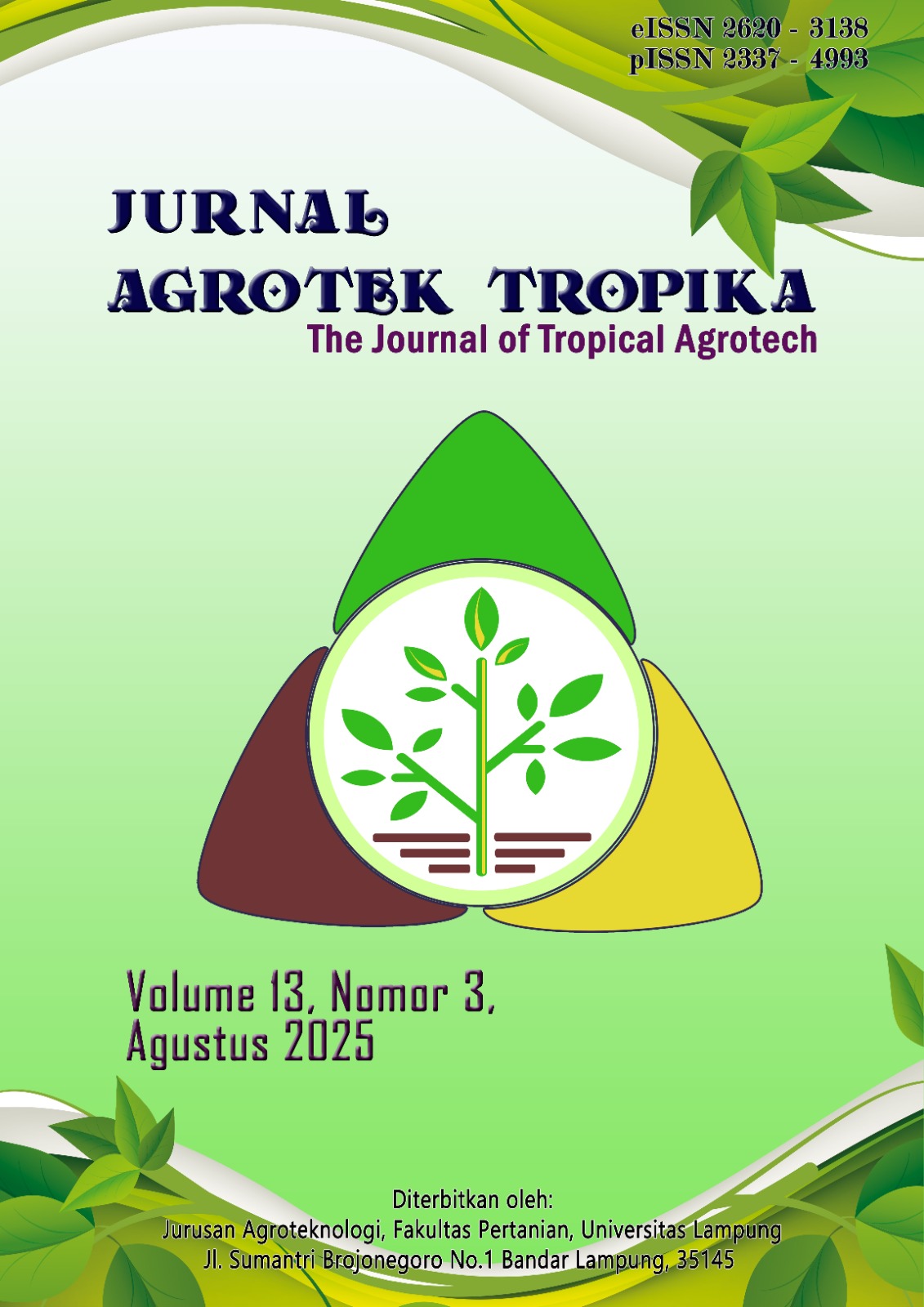POTENTIAL OF TRICHODERMA AS A PRESERVATIVE FOR SHALLOT BULB AND BIOFUNGICIDE FOR SHALLOT SEEDS
Keywords:
shallot, inhibitory power, filtrate, in vitro, TrichodermaAbstract
This study aims to determine the fungi that cause rotting of shallot bulbs (Allium cepa) in storage and to measure the ability of Trichoderma esperellum in preserving bulbs and protecting shallot seeds from rotting pathogens. The initial stage is to ensure the isolated pathogenic fungi with the Koch Postulate test. The next stage is the inhibition test between Trichoderma and pathogenic fungi, clove preservation, and the test of the protection ability of shallot seeds. The results showed that the cause of rot was Penicilium sp. In the in vitro test, T. esperellum was able to inhibit the growth of pathogen colonies by 61.9 ± 1.2% and increase the growth of its own colonies by 172.1 ± 10.8% respectively at 96 and 48 hours after inoculation. The application of T. esperellum suspension and filtrate suppressed bulb rot by 71.5 and 67.9% respectively in storage and increased germination by 127.8 and 122.2% compared to without Trichoderma. The use of Trichoderma filtrate can be used as an active ingredient in biopesticides for preserving cloves and protecting red onion seedsDownloads
Published
How to Cite
Issue
Section
License
Copyright (c) 2025 Sutarman Sutarman

This work is licensed under a Creative Commons Attribution 4.0 International License.
Jurnal Agrotek Tropika (JAT) is licensed under a Creative Commons Attribution 4.0 International License.
The copyright holder is the author. Authors publishing under any license allowed by the journal retain the copyright and full publishing rights without restrictions.
The Creative Commons Attribution 4.0 International (CC BY 4.0) license allows users to copy, distribute, and adapt the work, even for commercial purposes, as long as proper attribution is given to the original creator. This is a highly flexible license that encourages widespread dissemination and use of creative works, supporting innovation and collaboration across various fields.











